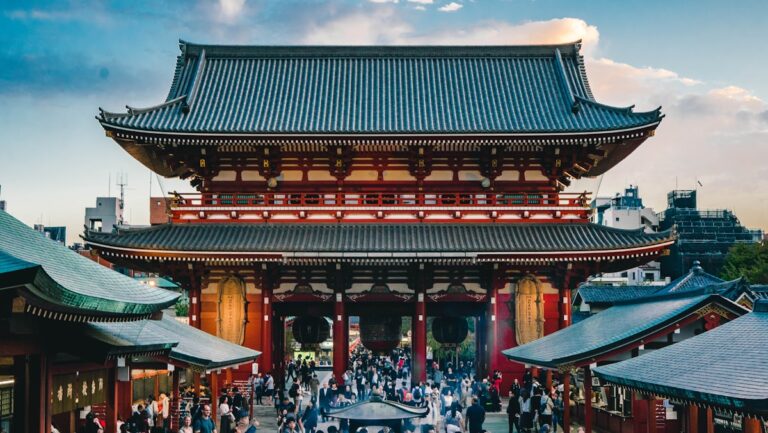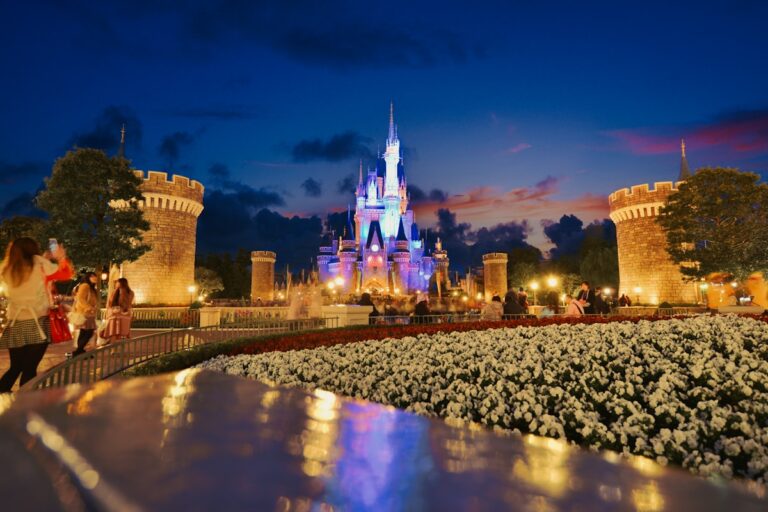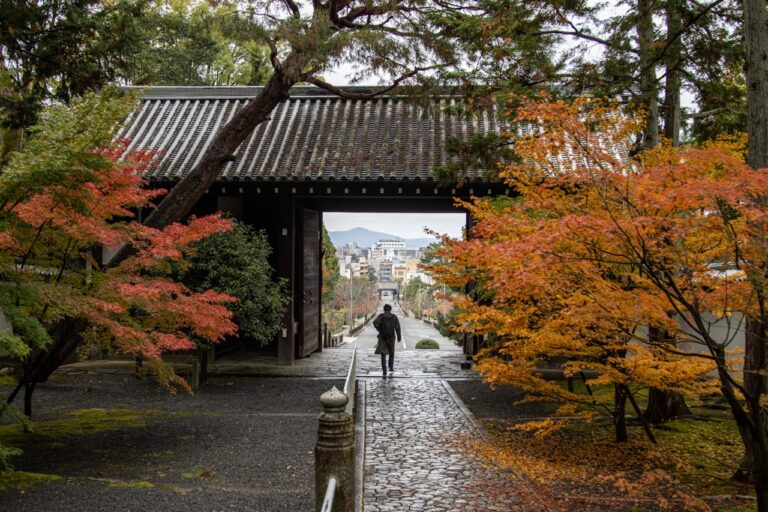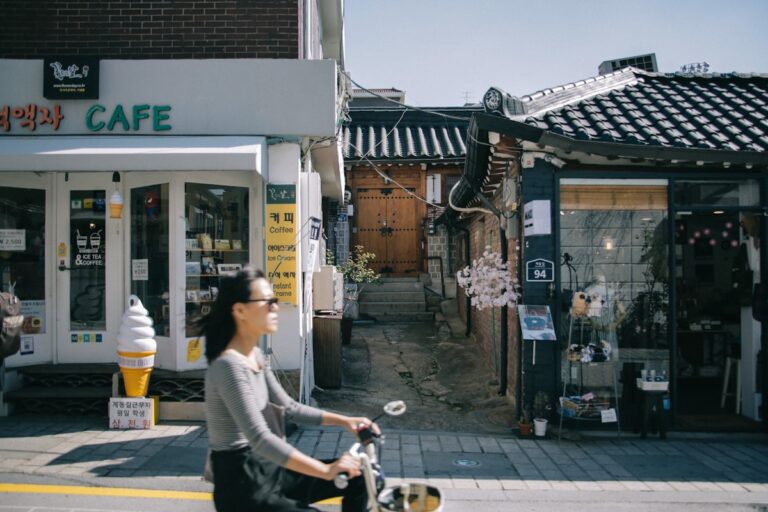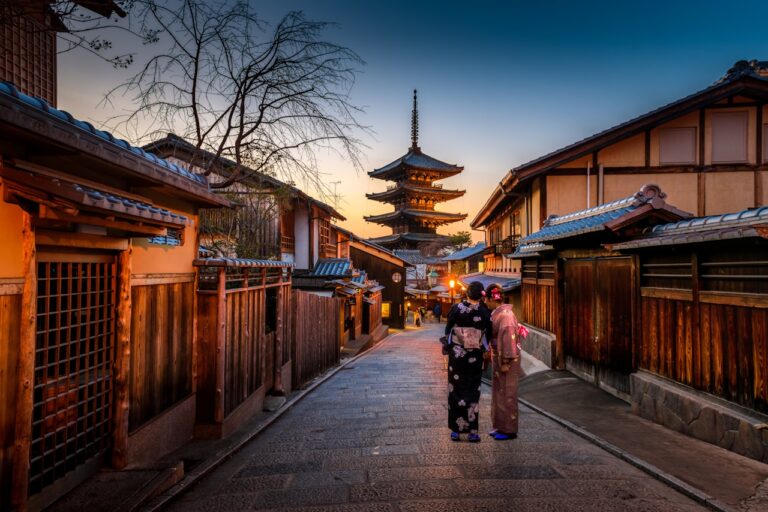Best Times to Visit Seoul
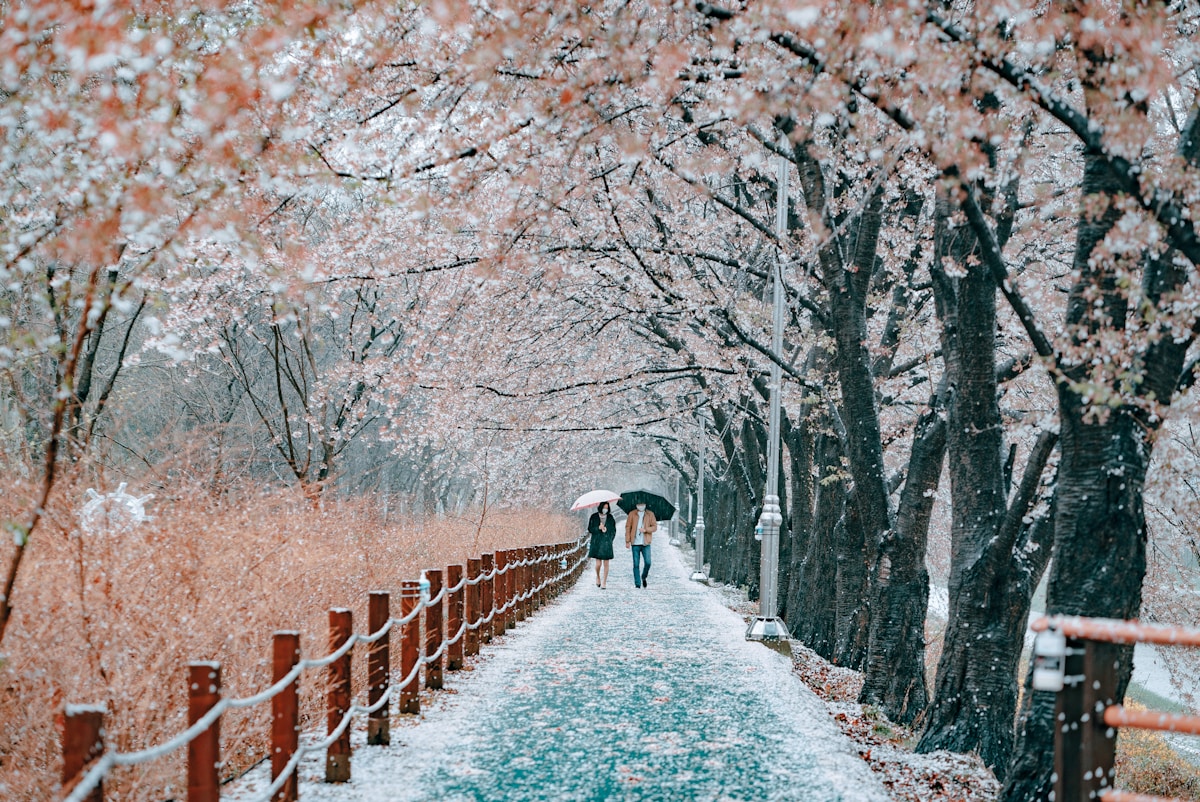
Seoul offers distinct experiences across its four seasons, each with unique characteristics for travelers to ponder.
- Understanding Seoul's Seasons and Weather
- Spring in Seoul: Blossoms and Mild Weather
- Summer in Seoul: Hot Weather and Festivities
- Autumn in Seoul: Cool Temperatures and Fall Foliage
- Winter in Seoul: Cold Weather and Snowy Scenery
- Choosing the Best Time of Year to Visit Seoul Based on Interests
- When Is the Best Time to Go to Seoul Korea?
- Wrapping Up
Spring brings cherry blossoms and mild temperatures, while summer delivers cultural festivals amid humidity.
Autumn showcases stunning foliage under clear skies, and winter transforms the city with snow-covered palaces and fewer tourists.
Understanding these seasonal variations helps visitors determine when their journey to South Korea’s capital might best align with personal preferences.
Key Takeaways:
Hide- Spring (March–May) and fall (September–November) offer mild temperatures (10–22°C) and beautiful natural scenery 🌸🍂🏞️
- May and October are particularly recommended for comfortable weather and fewer crowds ☀️🍁🧳
- Budget travelers should consider late January to February or shoulder months (March/November) for lower prices 💸📅✈️
- Summer (June–August) features cultural festivals but brings high heat, humidity, and monsoon rains in July 🎉🌧️🌡️
- Winter (December–February) offers unique experiences like ice skating and seasonal foods, with fewer tourists despite sub-zero temperatures ⛸️🍲❄️
Understanding Seoul’s Seasons and Weather
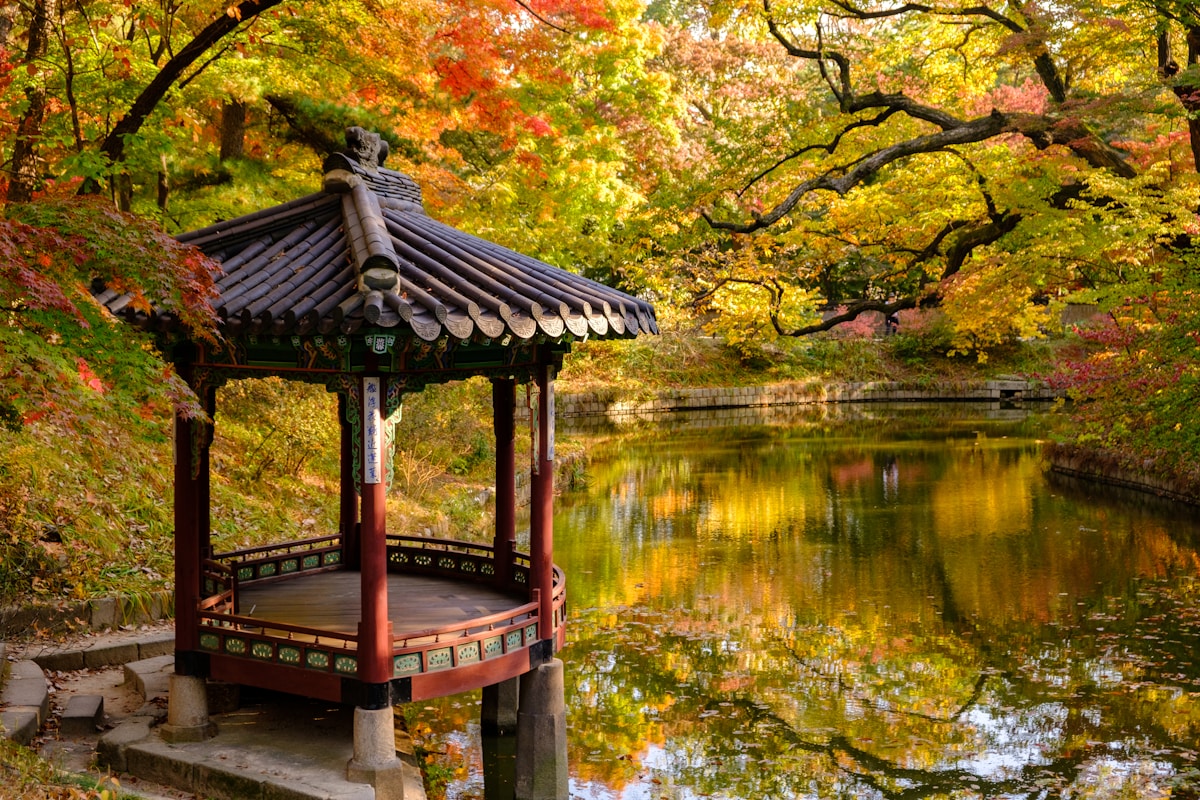
Seoul experiences four distinct seasons, with hot humid summers from June to August reaching 30°C, and cold dry winters from December to February often dropping below freezing.
Spring (April-May) and fall (September-October) offer mild temperatures between 15-25°C with lower humidity and spectacular natural scenery of cherry blossoms or autumn foliage.
Most travelers find these interim seasons ideal for exploring the city comfortably, with May and October particularly recommended for ideal weather conditions.
How Seoul’s Climate Changes Throughout the Year
Seoul experiences four distinct seasons that dramatically transform the city’s landscape and visitor experience throughout the year.
Winters (December-February) are cold and dry with temperatures often below freezing, while summers (June-August) bring heat, humidity, and monsoon rains with temperatures frequently exceeding 30°C (86°F).
Spring (March-May) and autumn (September-November) offer mild temperatures and less precipitation, with spring featuring cherry blossoms and autumn showcasing resplendent foliage colors.
1. What to Expect From Each Season in Seoul
With four distinct seasons that undergo dramatic transformations, the capital of South Korea experiences climate patterns that travelers should understand before planning their visit.
The best time to visit Seoul varies by preference, spring (March-May) brings cherry blossoms, summer (June-August) offers warmth with monsoons, autumn (September-November) showcases colorful foliage, while winter (December-February) delivers crisp air and occasional snow.
2. Average Temperatures and Rainfall by Month
To properly prepare for a trip to Seoul, travelers should familiarize themselves with the city’s monthly climate patterns.
The best months to visit Seoul offer distinct weather experiences:
- Spring (March-May): 50-70°F with moderate rainfall
- Summer (June-August): 75-85°F with monsoon season in July
- Fall (September-November): 45-75°F with minimal precipitation
- Winter (December-February): 20-40°F with occasional snow
Best Time to Travel to Seoul for Comfortable Weather
Seoul’s most comfortable weather occurs during spring (April-June) and autumn (September-November), when temperatures range between 60-75°F and rainfall is moderate.
Summer months (July-August) bring intense heat, humidity, and monsoon rains that can disrupt travel plans.
Winter (December-February) delivers frigid temperatures often below freezing, though the city experiences relatively little snowfall compared to other destinations at similar latitudes.
1. Months With Pleasant Temperatures and Minimal Rain
The ideal window for visiting Seoul falls between late April to early June and September to early November, when temperatures hover between 15-25°C (59-77°F) and rainfall remains minimal.
These periods offer:
- Clear skies perfect for outdoor attractions
- Comfortable seoul time and weather without humidity extremes
- Fewer tourists than peak summer months
- Dynamic seasonal colors, spring blossoms or autumn foliage
2. When to Avoid Extreme Cold or Heat
While those pleasant shoulder seasons offer Seoul’s most comfortable weather, serious travelers should be aware of the city’s challenging climate extremes.
Visitors seeking freedom from oppressive conditions should avoid Seoul in July, when humidity peaks amid monsoon season.
Winter’s harsh cold strikes from December through February.
Seoul in September and Seoul in November represent the sweet spots for the best time to visit Seoul, Korea.
Spring in Seoul: Blossoms and Mild Weather
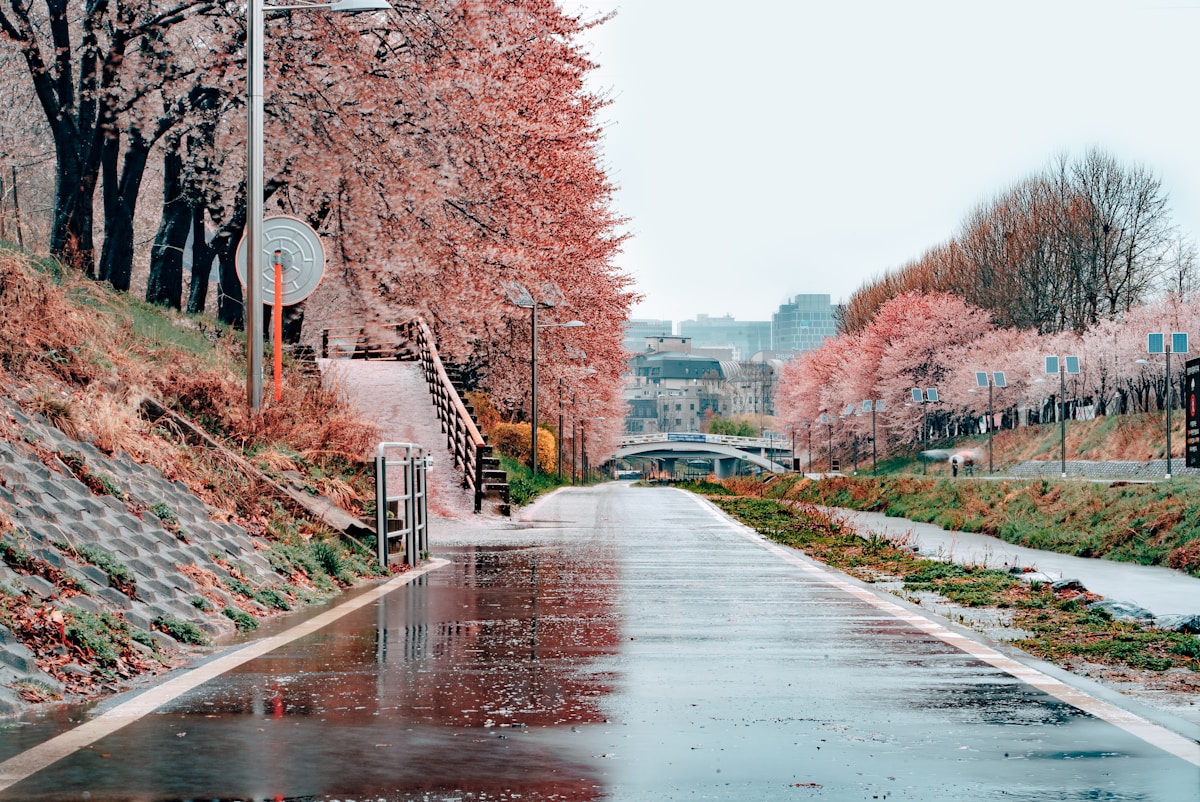
Spring in Seoul, spanning from late March to early May, offers visitors the ideal blend of cherry blossoms and comfortable temperatures ranging from 50-70°F (10-21°C).
The city transforms during this season as pink and white flowers adorn streets, parks, and riverside paths, with Yeouido’s Cherry Blossom Festival ranking among the most popular attractions.
Beyond flower viewing, spring visitors can enjoy outdoor cultural performances, traditional tea ceremonies, and hiking the city’s surrounding mountains while they showcase radiant new greenery.
Best Months to Visit Seoul in Spring
Spring in Seoul reaches its pinnacle in early April when cherry blossoms paint the city in delicate pink hues, typically blooming for just one week between late March and mid-April.
Visitors planning around this natural spectacle should monitor weather forecasts closely, as exact flowering dates vary annually based on temperature patterns.
The season also hosts lively cultural celebrations including the Yeouido Spring Flower Festival, Seoul Drum Festival in May, and numerous traditional performances in parks and palaces throughout the city.
1. When to Visit Seoul for Cherry Blossoms
The cherry blossoms in Seoul transform the city into a breathtaking pink paradise typically from late March through mid-April.
For travelers wondering when is the best time to go to Seoul Korea for these stunning blooms:
- First week of April offers peak viewing at Yeouido Park
- Late March blooms appear at Namsan Park
- Mid-April features travel to Seoul Korea’s palaces adorned with petals
- Travel Seoul Korea during weekdays to avoid weekend crowds
2. Events and Festivals That Take Place in Spring
When traditional hanbok-clad performers and modern K-pop icons populate Seoul’s sun-dappled streets, visitors know spring festival season has arrived in South Korea’s capital.
The city buzzes with the Yeouido Spring Flower Festival, Jongmyo Jerye ancestral rites, and Buddha’s Birthday celebrations at temples citywide.
Seoul Drum Festival and radiant Lotus Lantern Festival round out this season’s diverse cultural showcase.
Things to Do in Seoul During Spring
Spring in Seoul offers visitors the enchanting opportunity to wander through the city’s historic palaces and parks as cherry blossoms and other seasonal flowers create picturesque landscapes.
The mild temperatures make it ideal for exploring Seoul’s lively outdoor markets where local vendors showcase seasonal products and handcrafted goods.
Visitors can also enjoy Seoul’s café culture by claiming spots on sun-drenched terraces, where they can savor traditional teas or coffee while watching the city embrace the season’s renewal.
1. Visiting Parks and Palaces Covered in Flowers
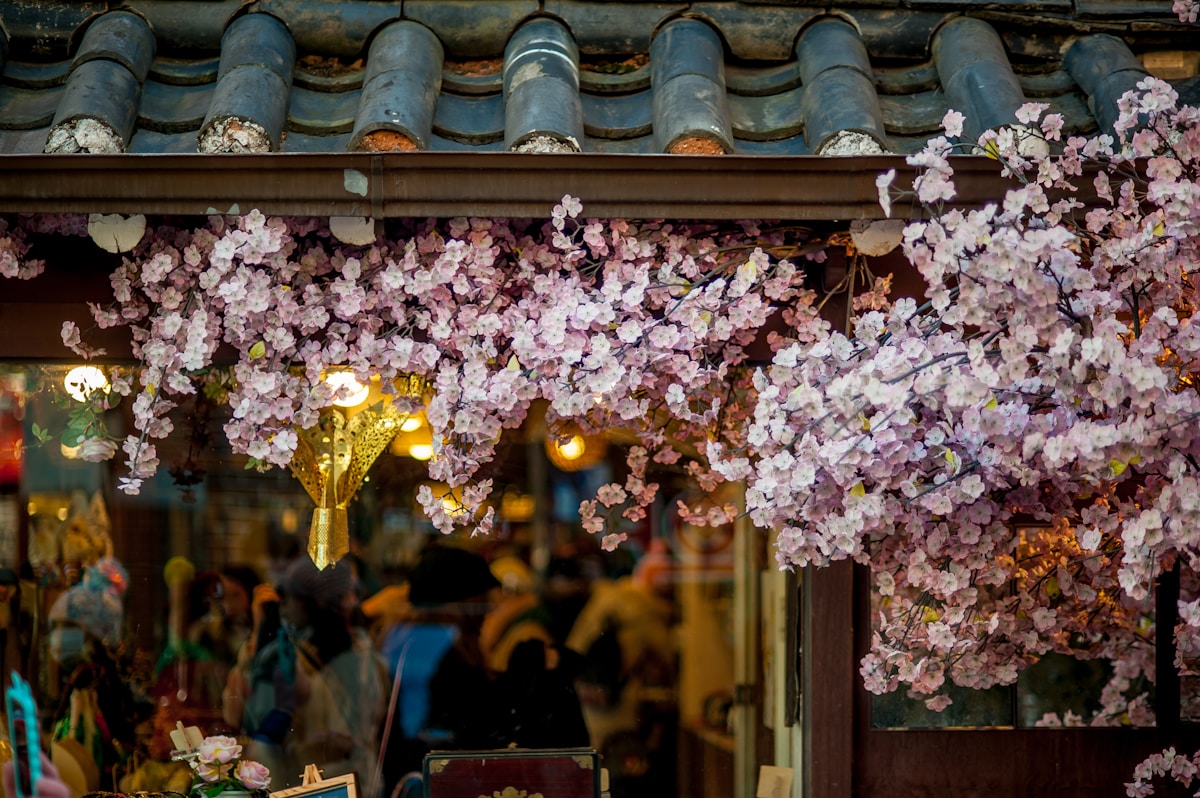
Seoul’s historic parks and palaces transform into magnificent floral displays during spring, offering visitors breathtaking landscapes awash with color.
Four must-visit locations for flower viewing:
- Changdeokgung Palace’s Secret Garden, where cherry blossoms frame ancient architecture
- Yeouido Park’s famous cherry blossom festival
- Olympic Park’s radiant wildflower meadows
- Namsan Park’s hillside azaleas with city views below
2. Exploring Outdoor Markets and Café Terraces
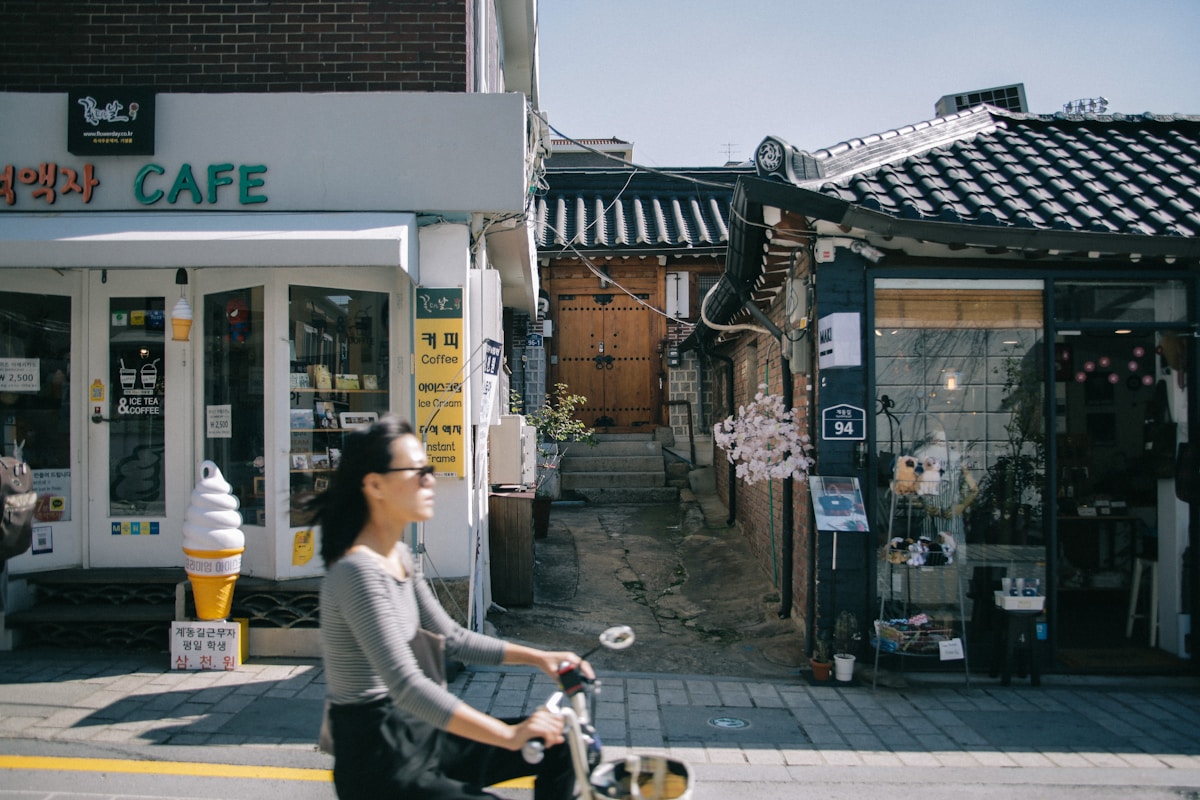
As the cherry blossoms reach their peak and mild temperatures settle over the city, outdoor markets and café terraces across Seoul bustle with renewed energy.
Locals and visitors alike flock to Hongdae’s lively street stalls, Garosu-gil’s chic sidewalk cafés, and the sprawling Namdaemun Market.
Spring transforms these spaces into perfect vantage points for people-watching while savoring traditional street food or artisanal coffee.
Summer in Seoul: Hot Weather and Festivities
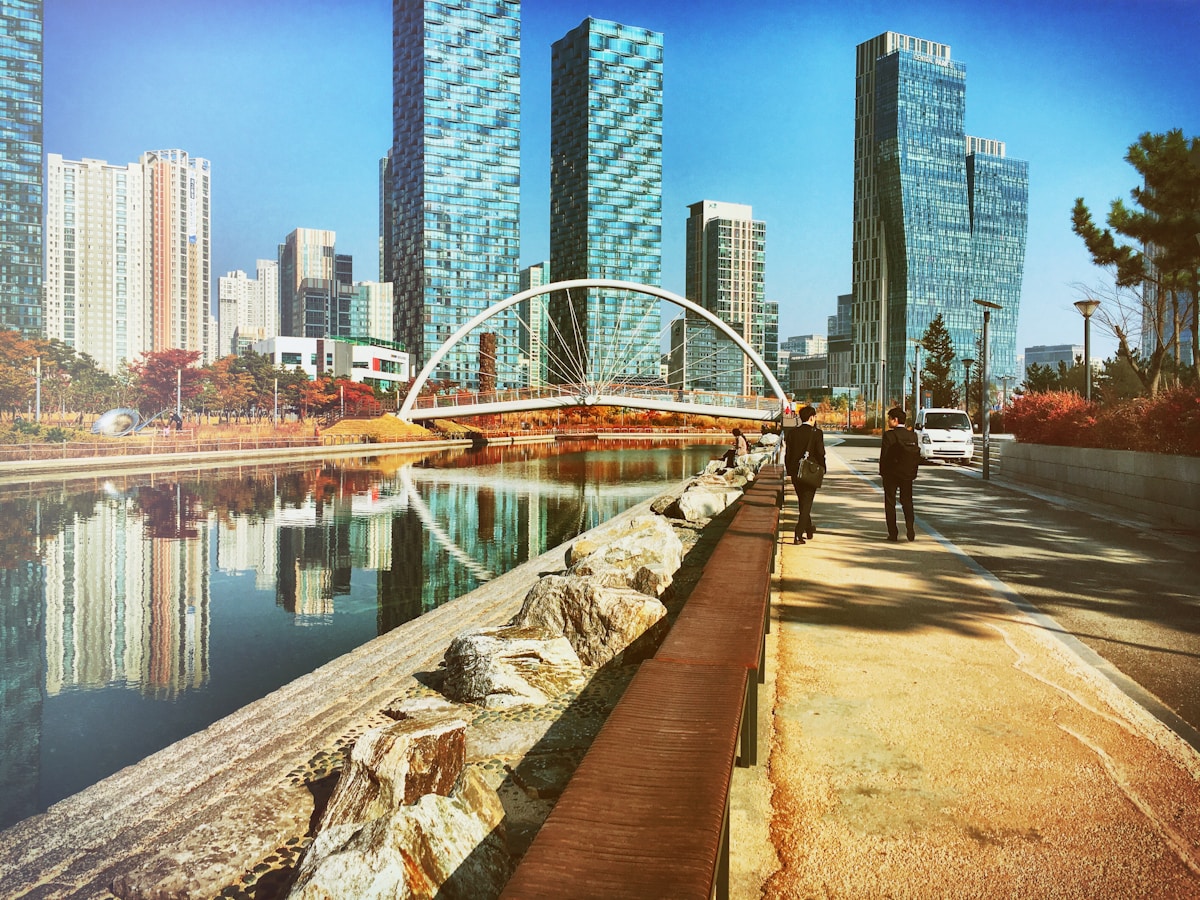
Seoul’s summer months of July and August bring scorching temperatures often exceeding 30°C (86°F) along with high humidity and occasional monsoon rains.
Despite the heat, summer offers visitors lively cultural festivals including the Seoul International Cartoon & Animation Festival and numerous outdoor concerts throughout the city.
In summer, locals flock to waterparks or relax by the Han River in the cooler evenings, making early mornings and late nights the best times for sightseeing.
Seoul in July and August: What to Expect
Seoul’s summer months of July and August bring intense heat and stifling humidity, with temperatures regularly exceeding 30°C (86°F) and humidity levels often reaching 70-80%.
Visitors should prepare for these conditions by carrying portable fans, wearing breathable fabrics, and planning indoor activities during the peak afternoon hours.
Staying hydrated is essential, as is taking advantage of the city’s air-conditioned shopping malls, museums, and underground walkways when the heat becomes overwhelming.
1. Heat and Humidity Levels During the Summer Months
Travelers should prepare for oppressive heat and humidity when visiting Seoul during July and August, with temperatures regularly surpassing 30°C (86°F) and humidity levels often exceeding 70%.
The summer climate presents several challenges:
- Heat index values frequently reach 35-40°C, feeling substantially hotter than actual temperatures
- Sudden afternoon thunderstorms require flexible planning
- Urban heat islands intensify conditions in downtown areas
- Air conditioning becomes essential, not optional
2. How to Stay Cool While Sightseeing
To stay comfortable while exploring Seoul’s palaces and markets in the sweltering summer, visitors can use simple strategies to beat the heat and enjoy their trip.
Carrying a portable fan, wearing breathable fabrics, and seeking air-conditioned indoor attractions during peak afternoon hours can provide relief.
Many locals utilize cooling towels and frequent Seoul’s shaded parks between cultural excursions.
Best Time to Visit Seoul in Summer for Events
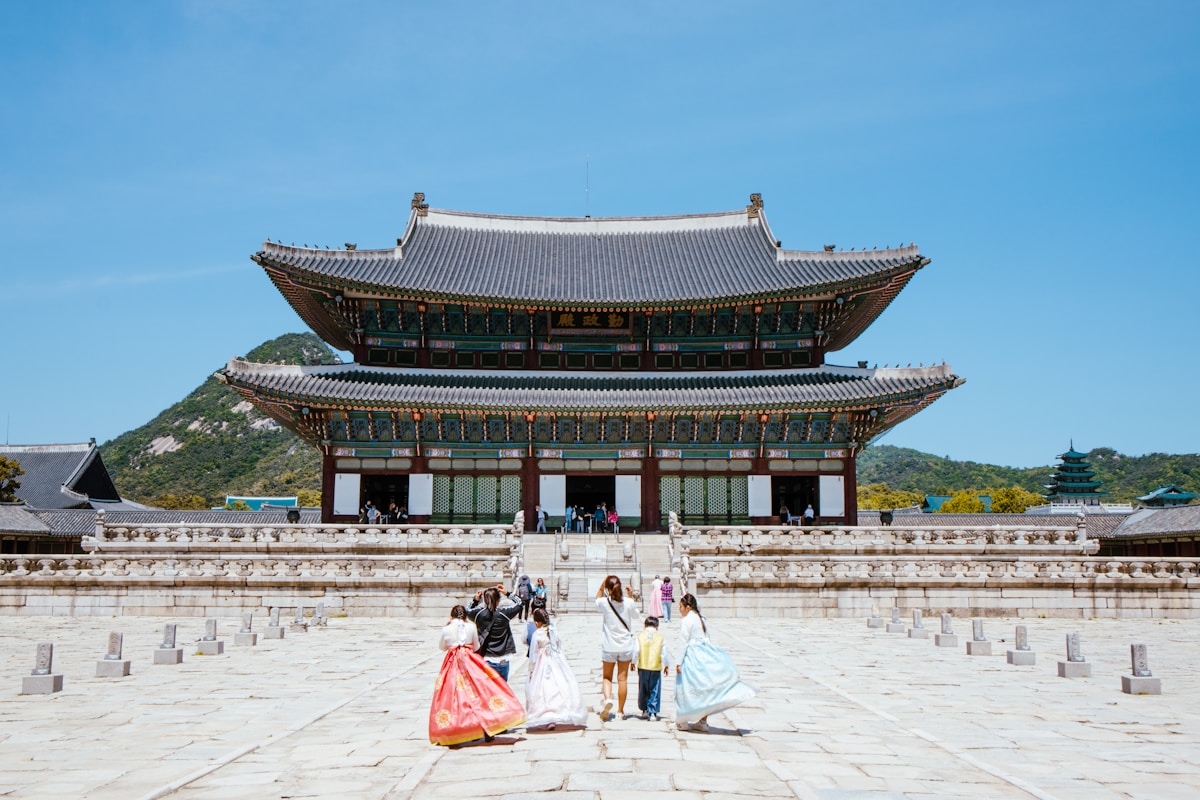
Seoul’s summer calendar bursts with traditional festivals and music celebrations that showcase the city’s dynamic cultural heritage.
Water parks across the metropolitan area offer welcome relief from the oppressive humidity, with Caribbay and Ocean World drawing thousands of heat-weary visitors daily.
Evening cultural performances in Gwanghwamun Square and the Seoul International Drum Festival in August provide entertainment opportunities while avoiding the midday sun.
1. Traditional Festivals and Music Celebrations
Summer in Seoul transforms the city into a dynamic hub of cultural celebrations, where traditional festivals and music events showcase Korea’s rich heritage against the backdrop of warm weather.
- Seoul Drum Festival (May-June) features thunderous performances celebrating Korea’s percussion traditions
- Gangnam Festival (October) blends traditional and modern entertainment with K-pop concerts
- Lotus Lantern Festival illuminates the city with thousands of handcrafted lanterns
- Jeongdong Theater’s seasonal performances present traditional dance and music
2. Water Parks and Seasonal Activities
When scorching temperatures rise from late June through August, Seoulites and visitors alike flock to the city’s numerous water parks and seasonal attractions for much-needed relief and entertainment.
Popular destinations include Caribbean Bay, One Mount Water Park, and Han River swimming pools.
Evening water fountain shows at Banpo Bridge offer invigorating spectacles, while mountainside retreats like Bukhansan provide cooler escapes for hardy adventurers seeking freedom from urban heat.
Autumn in Seoul: Cool Temperatures and Fall Foliage
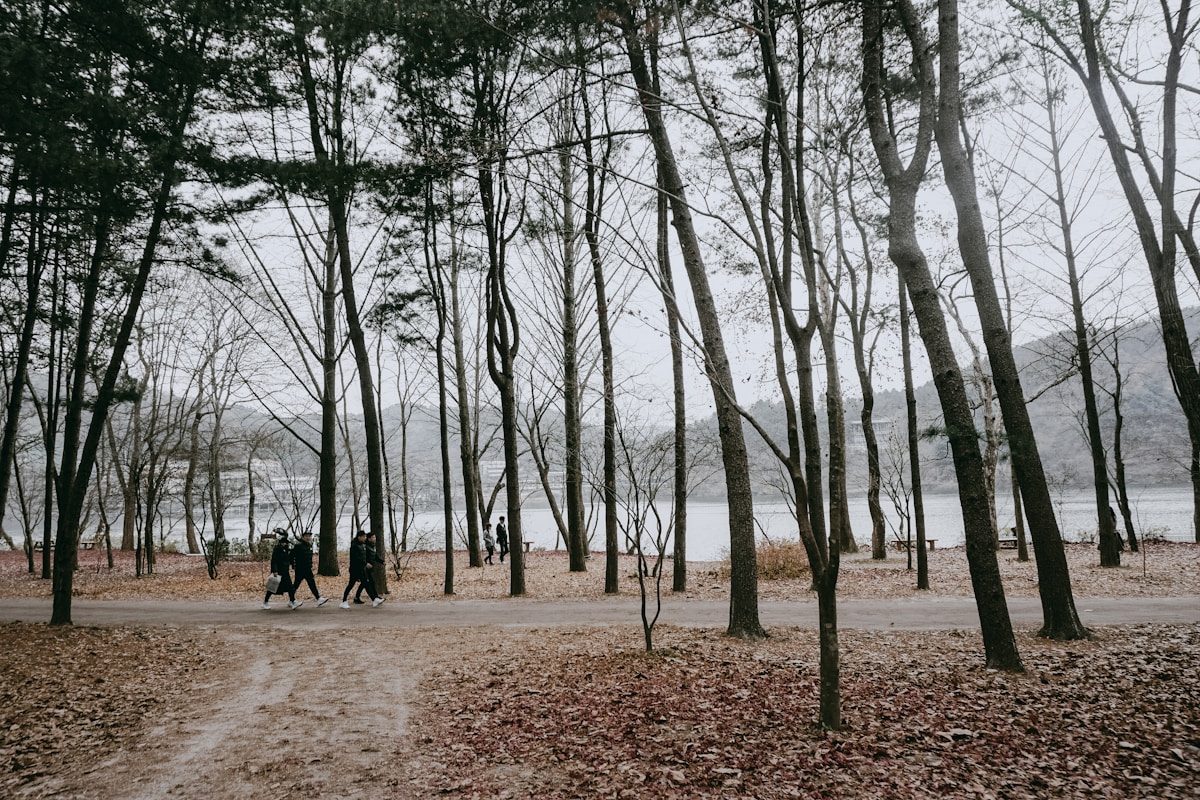
Autumn in Seoul, spanning from late September through November, offers visitors the most spectacular natural scenery as the city’s mountains and parks transform with resplendent crimson and golden foliage.
Mild temperatures between 10°C and 20°C (50°F–68°F) make it perfect for exploring outdoor gems like Namsan Park, Bukhansan National Park, and the Secret Garden at Changdeokgung Palace.
Autumn visitors can enjoy harvest festivals like the Seoul Lantern Festival, savor seasonal treats like roasted chestnuts and sweet potatoes, and capture the stunning fall colors framing Seoul’s palaces and skyline.
Best Time to Go to Seoul Korea for Autumn Colors
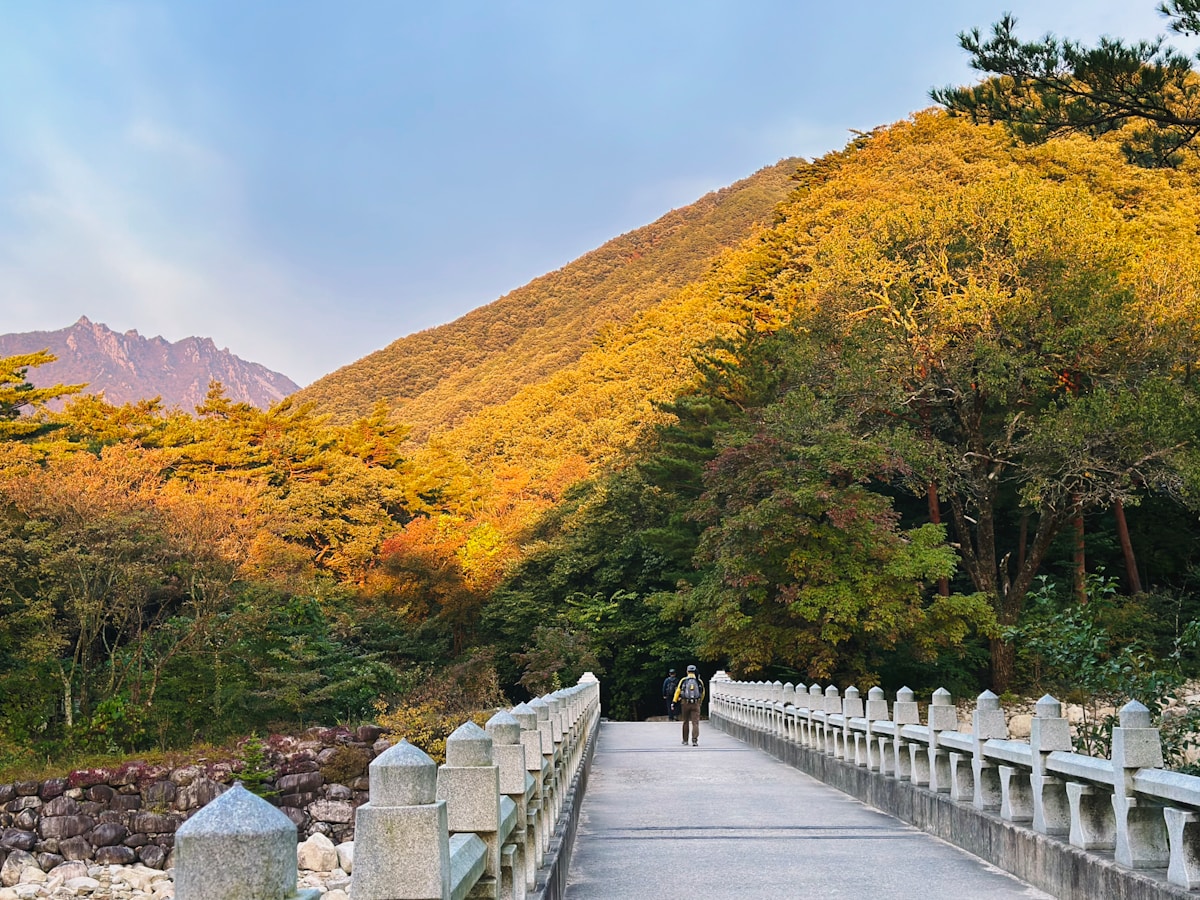
The dynamic transformation of Seoul’s landscape begins in late September, with the peak autumn colors typically reaching their zenith in mid to late October.
Visitors can witness this spectacular natural display at popular viewing spots like Bukhansan National Park, Namsan Park, and the scenic gardens of Changdeokgung Palace.
As temperatures gradually cool from September’s mild weather to November’s crisp chill, travelers should prepare for comfortable daytime conditions but increasingly cold evenings as the season progresses.
1. When the Leaves Change and Where to See Them
Typically beginning in mid-October and lasting until early November, Seoul’s landscapes transform into a spectacular canvas of crimson, orange, and gold as the autumn foliage reaches its peak.
Prime viewing locations include:
- Bukhansan National Park’s hiking trails
- Changdeokgung Palace’s Secret Garden
- Seoul Forest Park’s maple groves
- Namsan Park’s panoramic city views with colorful backdrops
2. Seoul in September, October, and November: What to Expect
While the changing leaves create a picturesque backdrop across Seoul, the autumn season as a whole offers visitors an ideal balance of comfortable weather and cultural experiences.
September shifts from summer heat to mild days, with October bringing crisp air and resplendent foliage peaking around late October through mid-November.
Fall festivals and outdoor markets flourish as temperatures hover between 10-20°C.
Activities to Enjoy in Seoul During Fall
Autumn in Seoul offers exceptional outdoor experiences, with Bukhansan National Park providing dynamic hiking trails adorned with red and golden foliage.
Visitors can ascend various peaks for panoramic views of the city framed by fall colors, making it a photographer’s paradise.
In autumn, Seoul’s historic palaces, especially Gyeongbokgung and Changdeokgung, come alive as crimson maples and golden ginkgo trees frame their timeless architecture.
1. Exploring Bukhansan National Park for Hiking
For outdoor enthusiasts seeking to experience Seoul’s autumn splendor, Bukhansan National Park offers some of the most spectacular hiking opportunities in the region.
Visitors can enjoy:
- Baegundae Peak, the park’s highest summit at 836 meters
- Radiant crimson and gold foliage typically peaking in mid-October
- Well-maintained trails suitable for various experience levels
- Panoramic views of Seoul’s cityscape contrasted against autumn colors
2. Visiting Palaces Surrounded by Autumn Leaves
Seoul’s ancient palaces transform into enchanting showcases of cultural heritage during the fall months, where centuries-old architecture stands amid resplendent autumn foliage.
Gyeongbokgung and Changdeokgung offer particularly stunning autumn displays, with crimson maples and golden ginkgos framing traditional courtyards.
Photographers and history enthusiasts alike find October to mid-November ideal for capturing these royal compounds bathed in fall’s rich palette.
Winter in Seoul: Cold Weather and Snowy Scenery
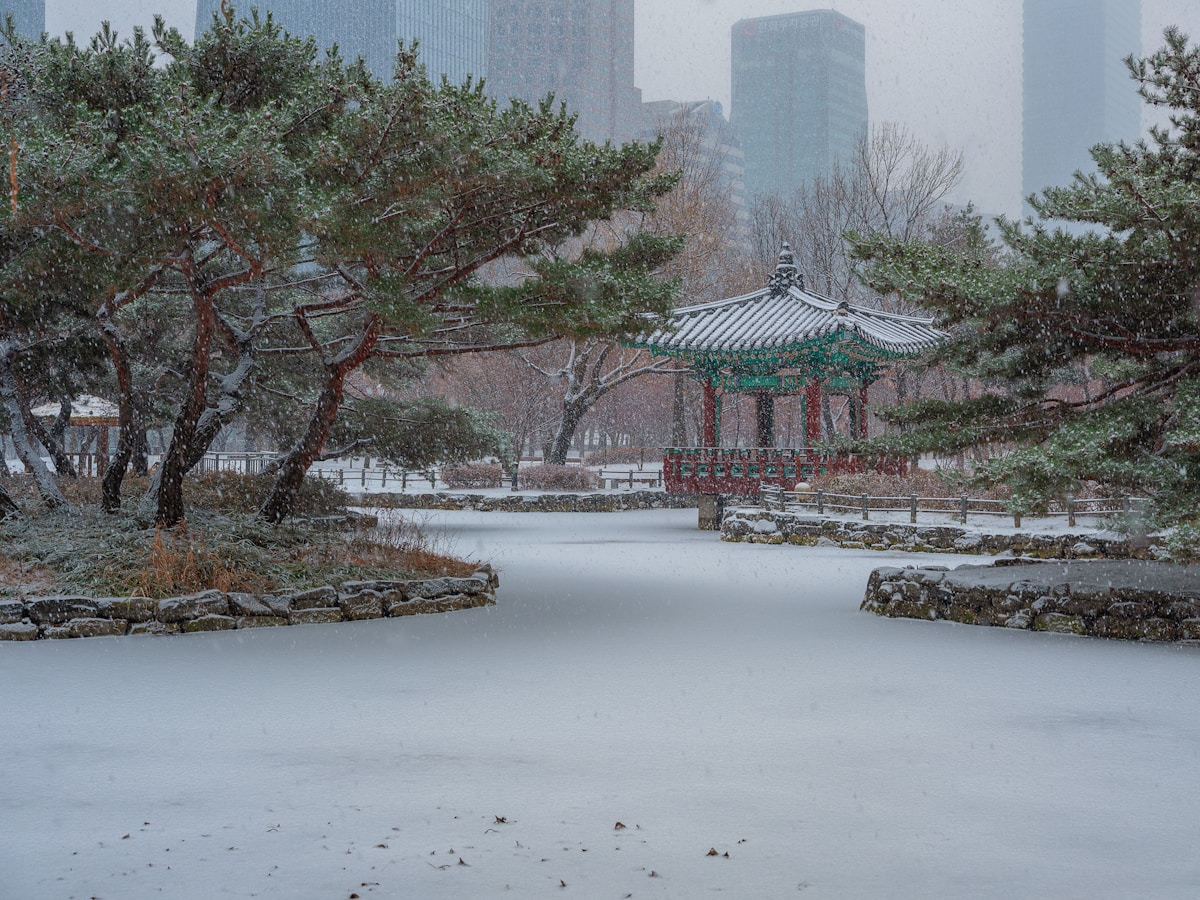
Winter transforms Seoul into a snowy wonderland from December through February, with temperatures often dropping well below freezing.
Visitors during these months can experience the city’s magical illuminations, particularly at palaces like Gyeongbokgung where snow-covered traditional architecture creates stunning photo opportunities.
Winter in Seoul also offers unique seasonal activities including ice skating at outdoor rinks, warming up in traditional Korean saunas, and enjoying specialty winter foods like hotteok (sweet filled pancakes) at the city’s many winter festivals.
Seoul in December, January, and February: What It’s Like
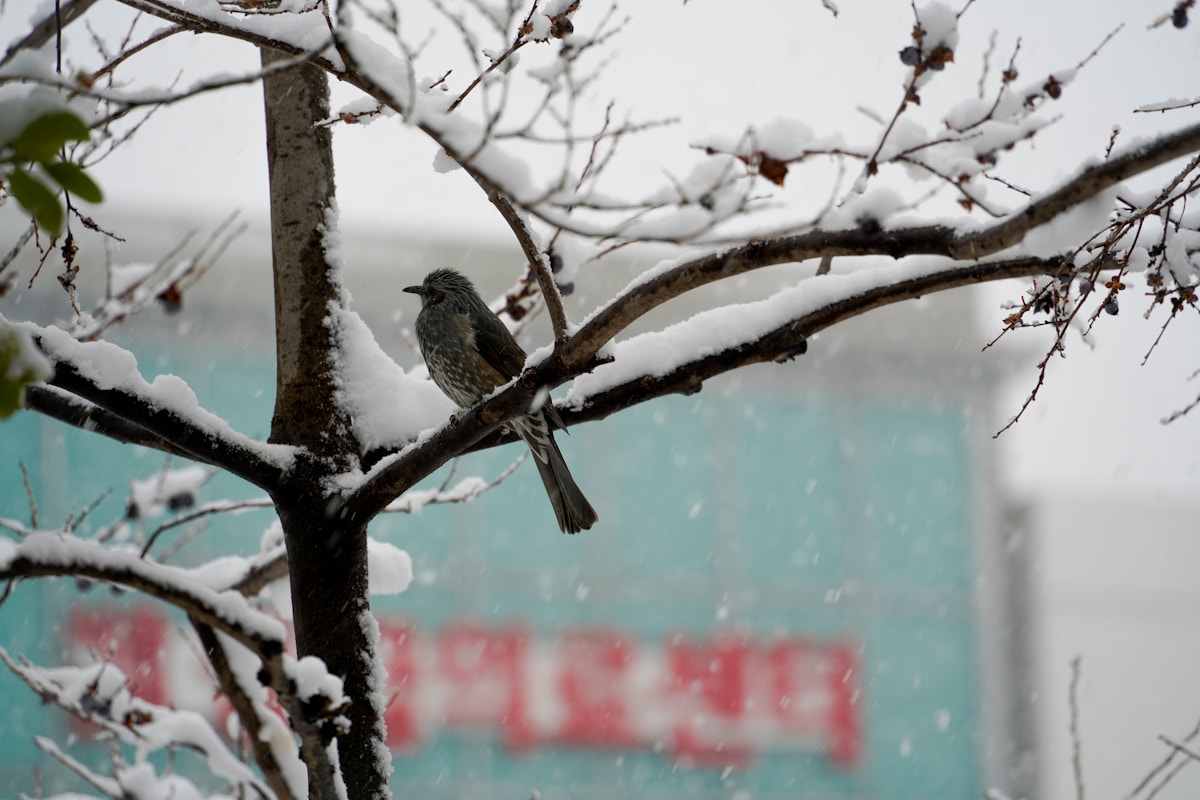
Seoul transforms into a winter wonderland from December through February with average temperatures dipping below freezing and occasional snowfall blanketing the city’s landscapes.
The coldest month is January, when temperatures typically range from -7°C to 1°C (19°F to 34°F), making it ideal for travelers seeking snowy vistas of palaces and mountains.
Visitors planning a winter trip should aim for mid-December to early February for the highest chances of experiencing Seoul’s picturesque snow-covered scenery.
1. Average Temperatures and Snowfall in the City
When December arrives, temperatures in Seoul plummet dramatically, with daily averages hovering between -5°C and 2°C (23°F to 36°F).
Seoul’s winter presents:
- January as the coldest month, averaging -7°C (19°F)
- Snowfall of 28cm (11 inches) annually
- Approximately 6-8 snow days per winter season
- Humidity levels dropping to 50-60%, creating crisp, dry conditions
2. When to Travel to Seoul Korea for a Winter Wonderland Experience
For those seeking a magical winter experience, December through February offers Seoul’s most enchanting snowy landscapes and seasonal festivities.
January typically brings the heaviest snowfall, transforming palaces like Gyeongbokgung into picturesque winter scenes.
Visitors can enjoy winter illuminations at Cheonggyecheon Stream, seasonal markets, and outdoor ice skating while experiencing authentic Korean winter cuisine.
Best Things to Do in Seoul During Winter
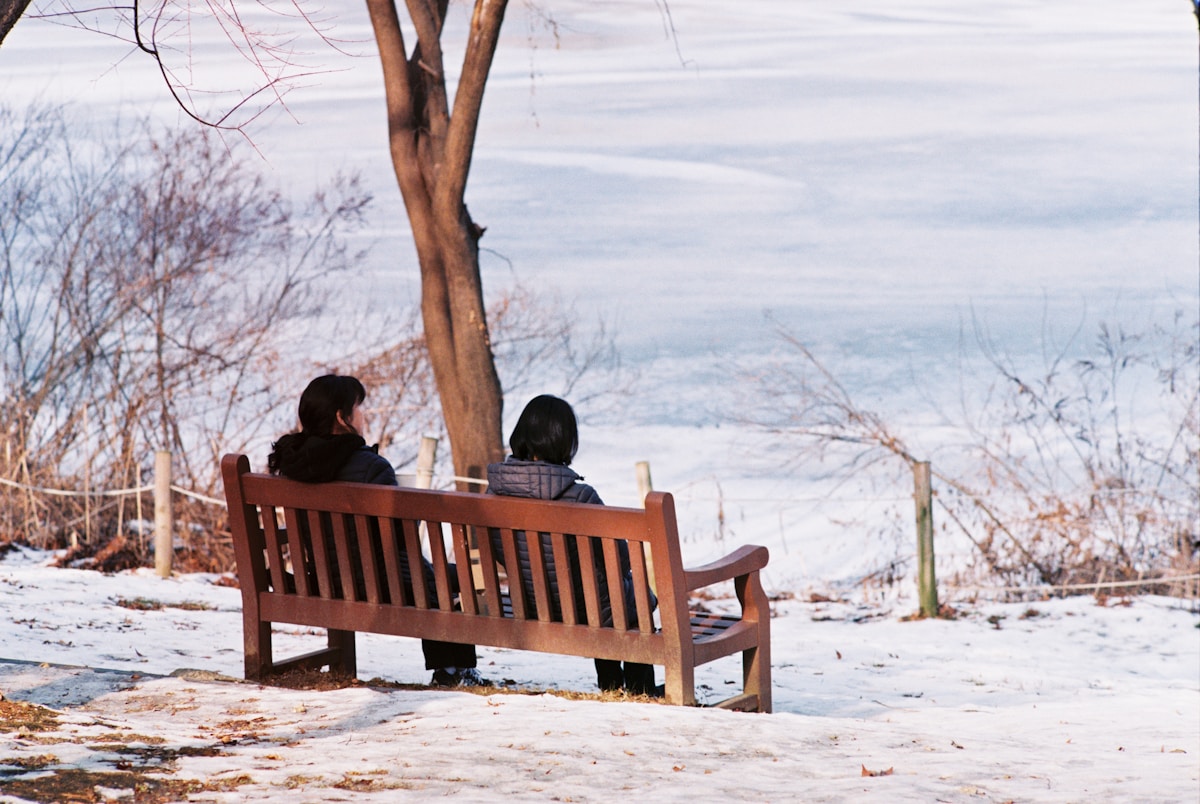
Seoul’s winter season offers visitors unique cultural experiences at lively ice festivals and holiday markets throughout the city.
Travelers can marvel at intricate ice sculptures at the Pyeongchang Trout Festival or browse handcrafted gifts at traditional Christmas markets in Myeongdong and Hongdae.
The cold weather creates perfect conditions for savoring Korean winter specialties like steaming hotteok (sweet filled pancakes), odeng (fish cake skewers), and hearty bowls of tteokguk (rice cake soup).
1. Visiting Ice Festivals and Holiday Markets
The winter months transform Seoul into a wonderland of festive attractions, with ice festivals and holiday markets dotting the cityscape from December through February.
Visitors can experience:
- The Yeouido Ice Park, offering skating against the Han River backdrop
- Cheonggyecheon Stream Light Festival’s illuminated sculptures
- Traditional crafts and foods at Myeongdong Christmas Market
- The grand ice sculptures at Ttukseom Seoul Ice Skating Championship
2. Enjoying Traditional Korean Winter Foods
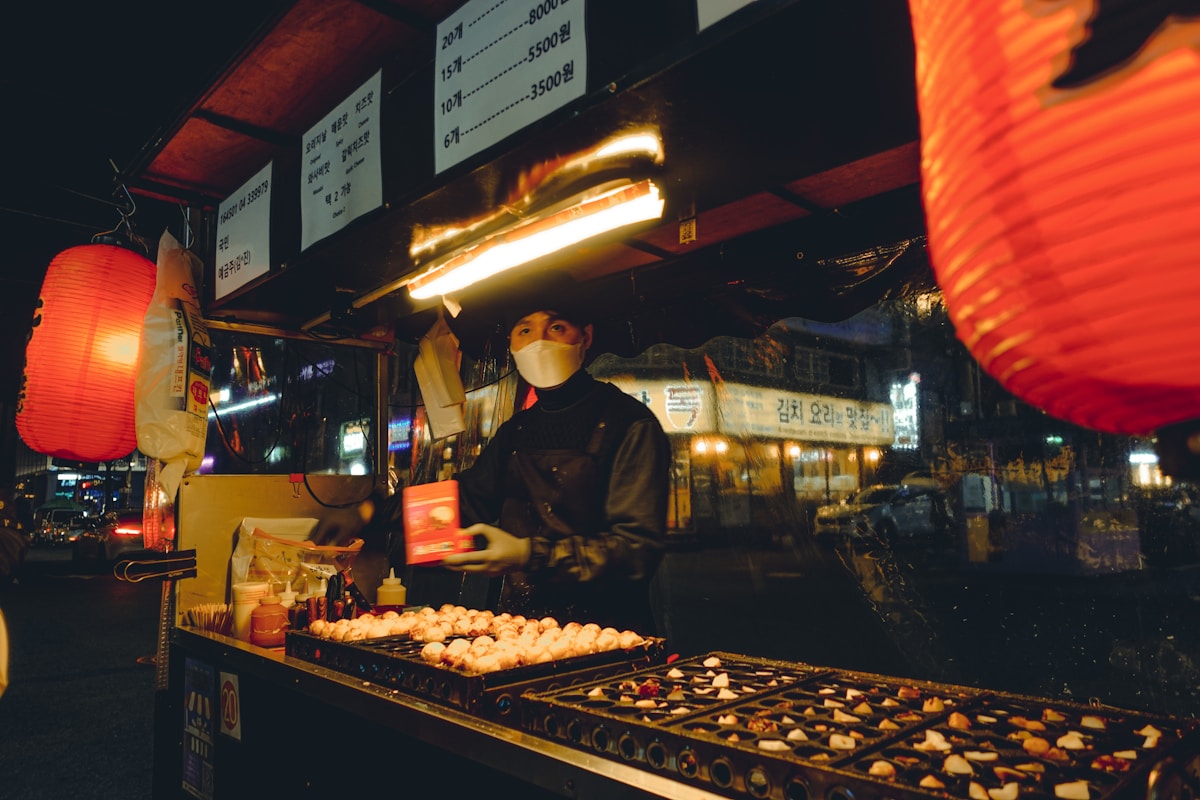
As temperatures plummet across the Korean peninsula, Seoul’s culinary landscape transforms to showcase hearty winter dishes that have sustained Koreans through harsh winters for centuries.
Visitors can warm up with steaming bowls of tteokguk (rice cake soup), hearty kimchi jjigae, or hot fish-shaped bungeoppang pastries.
Street vendors serve roasted chestnuts and hotteok (sweet pancakes) – perfect companions for exploring Seoul’s winter wonderland.
Choosing the Best Time of Year to Visit Seoul Based on Interests
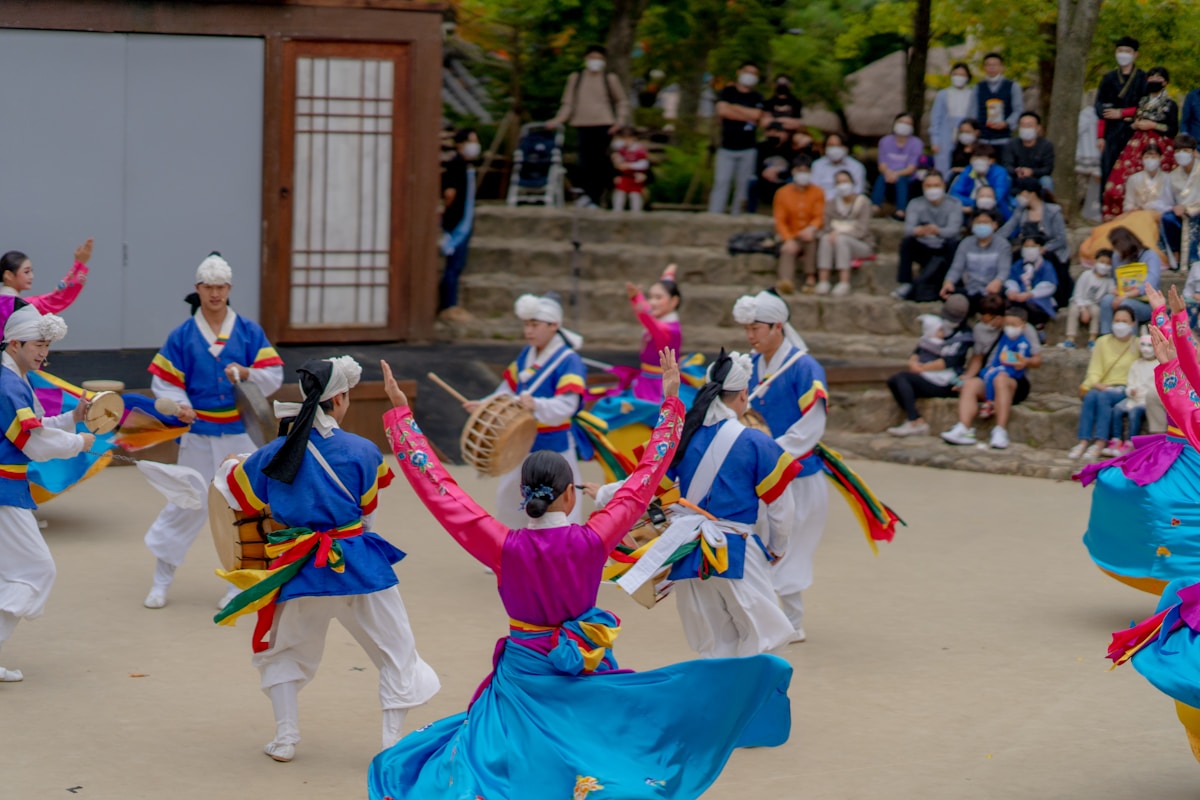
Travelers with specific interests will find certain months in Seoul particularly rewarding for their pursuits.
Fashion enthusiasts should visit during Seoul Fashion Week in March or October, while food lovers might prefer September through November when seasonal harvests enhance culinary offerings.
Budget-conscious travelers can take advantage of lower accommodation rates and fewer crowds during January and February, avoiding peak tourist seasons.
Best Time to Visit Seoul Korea for Shopping and Fashion
Seoul’s major shopping districts of Myeong-dong and Gangnam host significant sales in January/February and July/August, offering savvy shoppers substantial discounts on both local and international brands.
Fashion enthusiasts can experience Seoul’s trendsetting neighborhoods most comfortably during spring (April-May) and fall (September-October), when mild temperatures make exploring outdoor markets and shopping streets more pleasant.
Visiting these fashion hubs on weekday mornings allows travelers to browse boutiques and department stores without battling the dense weekend crowds that typically flood Seoul’s most stylish districts.
1. When Seasonal Sales Take Place in Myeong-dong and Gangnam
For bargain hunters and fashion enthusiasts planning a shopping expedition to Seoul, timing visits around the major seasonal sales in Myeong-dong and Gangnam can result in significant savings.
Seoul’s prime shopping districts offer seasonal discounts throughout the year:
- Winter Sales (January-February): Post-holiday clearances with up to 70% off
- Spring Sales (March-April): New season collections with early-bird discounts
- Summer Sales (July-August): Mid-year markdowns across most retailers
- Autumn Sales (October-November): Pre-holiday promotions and limited editions
2. Exploring Seoul’s Trendiest Districts Without the Crowds
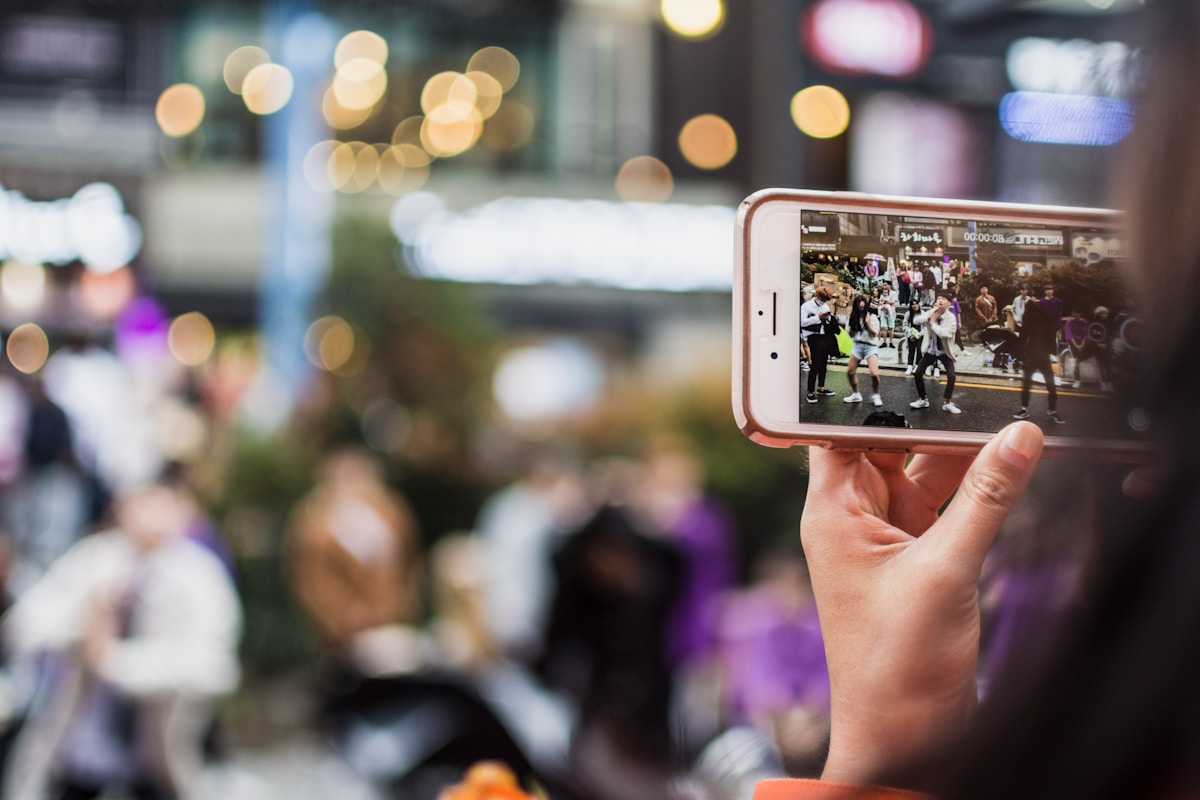
Beyond timing visits around seasonal sales, traversing Seoul’s fashion districts without battling crowds requires strategic planning.
Early weekday mornings in Hongdae and Garosu-gil offer peaceful browsing before noon crowds arrive.
Mid-January and late June provide breathing room in Itaewon and Sinsa-dong when locals retreat indoors due to weather extremes, leaving trendy boutiques comfortably accessible to discerning visitors.
Best Time to Travel to Seoul for Food Lovers
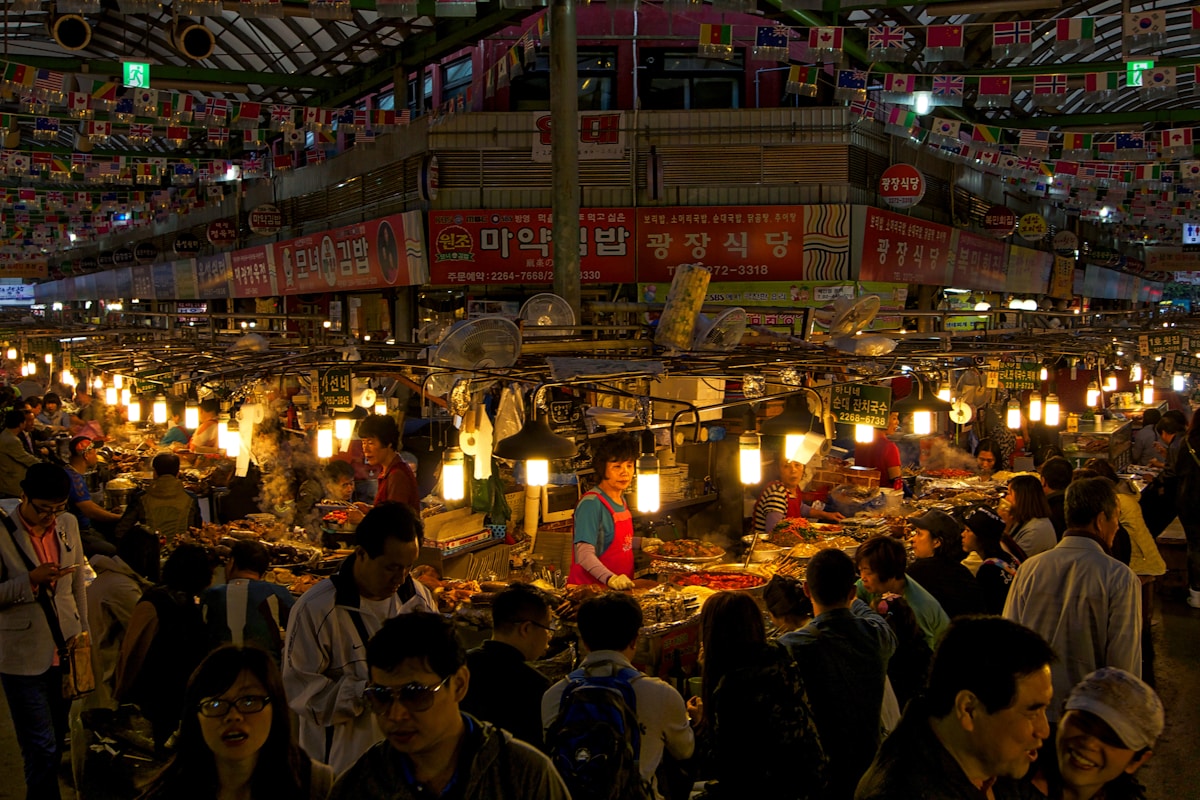
Seoul’s culinary charm transforms with each season, offering food lovers unique dishes and dining experiences throughout the year.
Each season in Seoul brings its own culinary delights: spring offers fresh namul and cherry blossom desserts; summer cools with naengmyeon and patbingsu; autumn warms with stews made from fresh harvests; and winter serves up hearty hotpots and street food from festive markets.
Food lovers can savor Seoul’s markets at their seasonal best, spring brings fresh seafood to Noryangjin Fish Market, fall fills outdoor pojangmacha with evening crowds, and winter draws diners to cozy hotpot spots.
1. Seasonal Dishes to Try in Spring, Summer, Fall, and Winter
When food lovers plan their visit to Seoul, understanding the city’s seasonal cuisine enhances the culinary experience tremendously.
Seoul’s culinary calendar offers distinctive flavors throughout the year:
- Spring – Fresh namul (wild vegetables) and delicate bom-namul (spring greens) dishes
- Summer – Cooling samgyetang (ginseng chicken soup) and naengmyeon (cold noodles)
- Fall – Hearty doenjang jjigae (soybean paste stew) with autumn harvest
- Winter – Warming budae jjigae (army stew) and hotteok (sweet pancakes)
2. Markets and Restaurants That Shine in Each Season
Savvy travelers exploring Seoul’s culinary landscape will discover that the city’s dynamic markets and specialty restaurants transform with the changing seasons.
Spring brings lively tea houses in Insadong, while summer sees Noryangjin Fish Market at its liveliest.
Fall transforms Gwangjang Market with harvest specialties, and winter makes Namdaemun’s steaming food stalls essential destinations for warming soups and hotpots.
Best Months to Visit Seoul for Budget Travelers
Budget-conscious travelers can find remarkable deals on flights and accommodations in Seoul during late January through February, following the Lunar New Year celebrations when tourism dips substantially.
March and November also offer excellent value with moderate weather conditions and markedly reduced crowds at major attractions like Gyeongbokgung Palace and N Seoul Tower.
These shoulder seasons provide budget travelers the dual advantage of lower prices and shorter queues, while still enjoying comfortable conditions for exploring the city’s numerous free cultural sites and public parks.
1. Finding the Cheapest Flights and Hotel Deals
For travelers looking to maximize their Seoul experience while minimizing costs, strategic timing can make a significant difference in airfare and accommodation prices.
- Book flights 2-3 months in advance for January-March departures when prices drop 15-20%
- Consider mid-week arrivals (Tuesday-Thursday) for both lower airfares and hotel rates
- Monitor flash hotel sales during November-December for winter/spring stays
- Utilize fare comparison tools specifically for Seoul’s shoulder seasons
2. When Tourist Attractions Are Less Crowded
The strategic traveler recognizes that timing a Seoul visit during off-peak seasons yields dual benefits: substantially thinner crowds at major attractions and more authentic cultural experiences.
Late October through November and March through April bring manageable visitor numbers at Gyeongbokgung Palace, Bukchon Hanok Village, and Namsan Tower, allowing for unrushed exploration and better photographs without masses of tourists in frame.
When Is the Best Time to Go to Seoul Korea?
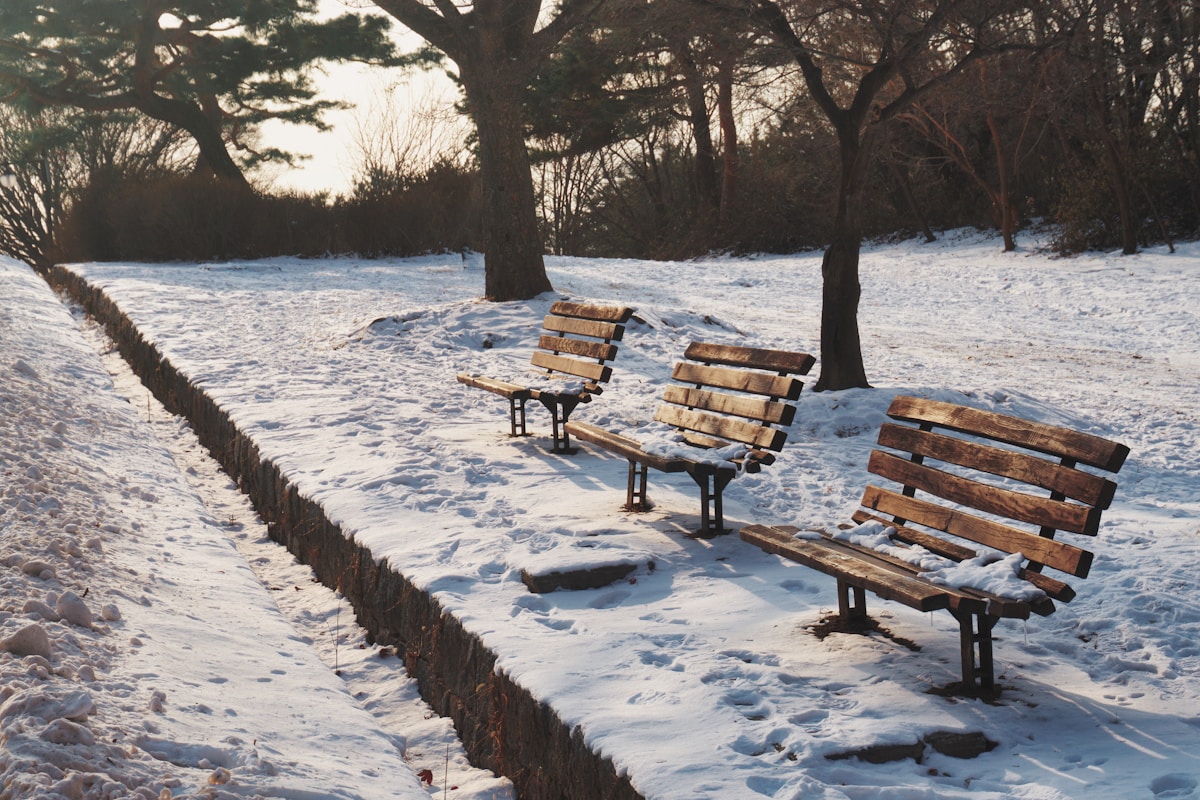
Prospective visitors to Seoul face important seasonal considerations when planning their trip.
Each of Korea’s four distinct seasons offers unique experiences, from spring cherry blossoms to winter snow-covered palaces.
Understanding the weather patterns, crowd levels, and seasonal events helps travelers make informed decisions about when to experience Seoul at its best.
Comparing the Pros and Cons of Each Season
Seoul’s four distinct seasons each offer visitors unique advantages and challenges when planning a trip to South Korea’s capital.
Travelers must weigh seasonal factors such as weather variations, fluctuating accommodation prices, and the timing of cultural festivals when determining their ideal travel window.
While spring cherry blossoms and autumn foliage create picturesque backdrops, summer’s humidity and winter’s frigid temperatures present considerations that can substantially impact one’s overall experience in the city.
1. Weather, Costs, and Special Events by Season
When planning a trip to Seoul, understanding the distinct characteristics of each season is crucial for a perfect experience.
Each period offers unique advantages:
- Spring (March-May): Mild temperatures (10-20°C), moderate prices, cherry blossom festivals
- Summer (June-August): Hot and humid (22-30°C), monsoon rains, higher accommodation costs
- Fall (September-November): Pleasant weather (10-22°C), colorful foliage, cultural festivals
- Winter (December-February): Cold (-7-5°C), lower tourism rates, illumination events
2. The Best Time to Visit Seoul South Korea for a Well-Rounded Experience
Choosing the ideal time to visit Seoul depends largely on personal preferences, as each season offers distinct advantages and challenges for travelers.
Spring (April-May) delivers cherry blossoms and mild weather, while autumn (September-October) showcases brilliant foliage with comfortable temperatures.
Summer brings lively festivals despite humidity, and winter offers unique charm with snow-covered palaces and discounted accommodation despite the cold.
Wrapping Up
Seoul offers distinct experiences throughout its four seasons. Spring (April-May) and autumn (September-October) stand as ideal visiting periods, with comfortable temperatures, natural beauty, and fewer crowds.
Summer brings lively cultural festivals despite humidity, while winter showcases stunning snow scenes and holiday festivities.
Travelers should align their visit with personal interests, whether cherry blossoms, autumn foliage, cultural events, or winter activities, to experience Seoul’s diverse seasonal charms.

